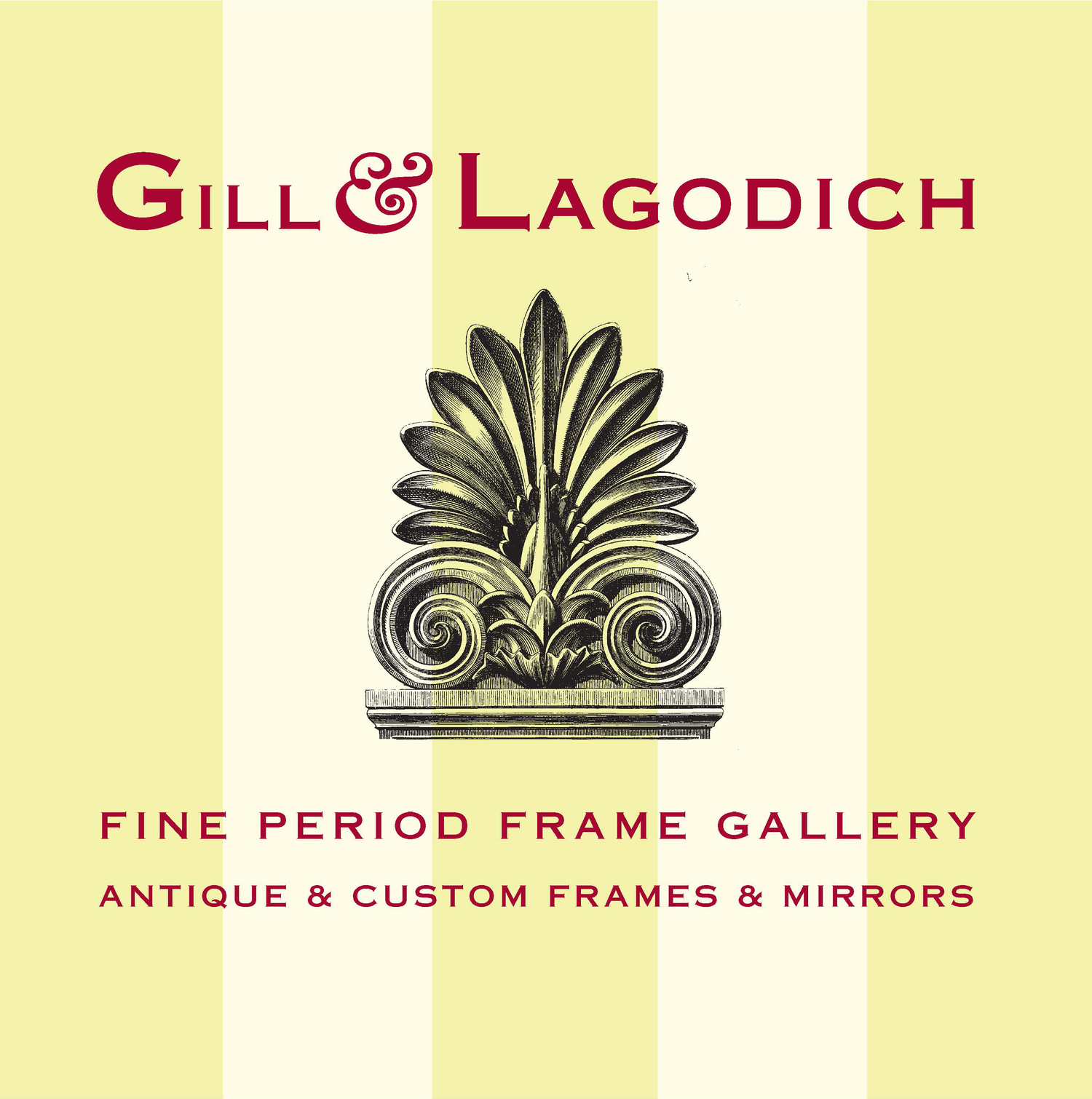NELSON-ATKINS MUSEUM OF ART, KANSAS CITY, MISSOURI
Gill & Lagodich was the framer of choice for restoration and replacement of twenty-eight American frames in the Nelson-Atkins collection, concentrated prior to the reopening of their elegantly refurbished American wing in early 2009. Gill & Lagodich frame work included conservation of five original museum frames in our New York City studios. We also reframed twenty-three museum paintings — twenty-one in period frames and two in custom-made replica frames. A selection of aforementioned projects appears here.
Period frames for: George Wesley Bellows, Frankie, The Organ Boy, 1907 and Pueblo Tesuque, No. 2, 1917; Alfred Thomas Bricher, Schooner, Close-Hauled, 1883; Jasper Francis Cropsey, Stonehenge, Salisbury Plains, 1876; Asher Brown Durand, Welch Mountain, 1863; Francis William Edmonds, The Thirsty Drover, 1856; Martin Johnson Heade, Sunset On The Rocks — Newport, 1861; Martin Johnson Heade, After The Rain In The Salt Marshes, 1874: Robert Henri, Mexican Girl with Oriental Scarf, c. 1916-22; Robert Henri, Francisco, 1922; Winslow Homer, Gloucester Harbor, 1873; George Inness, Looking Over The Hudson At Milton, 1886-88; Reginald Marsh, Pavonia, Jersey City, (Street Scene, Twelfth Avenue), 1928; Raphaelle Peale, Still Life With Liqueur And Fruit, 1814; Henry Ossawa Tanner, The Young Sabot Maker, 1895; John Singer Sargent, The Oyster Gatherers Returning, (Fisherwomen Returning), 1877; Jacob Caleb Ward, Natural Bridge, Virginia, c. 1835; Benjamin West, Raphael West and Benjamin West Jr. — Sons Of The Artist, 1796; and Francis William Wilkin, Nikkanochee, Prince Of Econchati, A Young Seminole Indian, Son of Red Hills, 1841.
Custom-made replica frames for George Fuller, Hannah, 1879; and F. Childe Hassam, The Sonata, 1893.
Restoration of original museum frames for: George Caleb Bingham, Canvassing For A Vote, 1852; Thomas Cole, The Old Mill At Sunset, 1844; Thomas Proudley Otter, On The Road, 1860; Benjamin West, Mr. and Mrs. John Custance, 1778; and Newell Convers Wyeth, Illustration for Drums, ca. 1928.

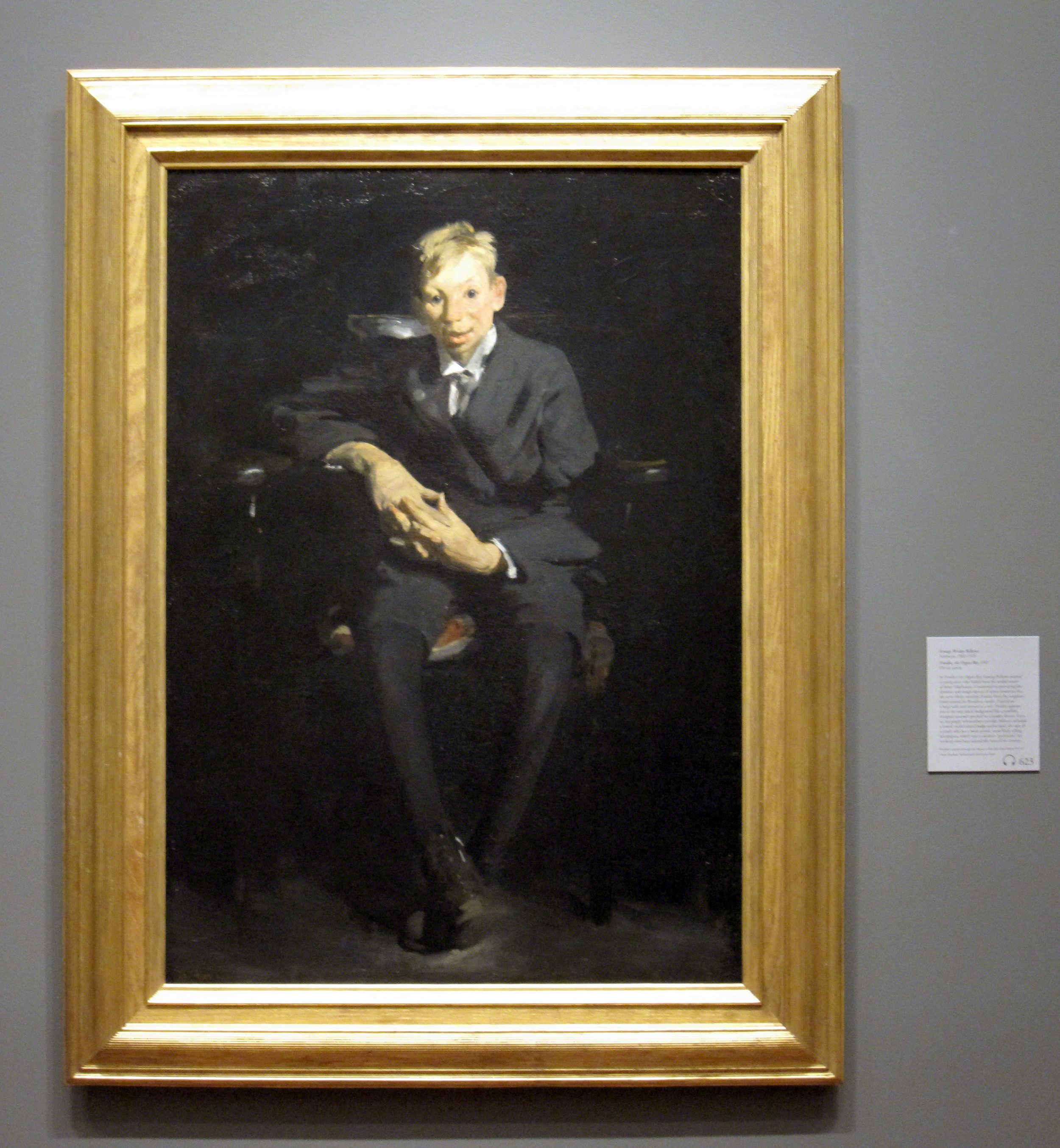
GEORGE WESLEY BELLOWS (1882 – 1925)
Frankie, The Organ Boy, 1907, oil on canvas, 48-1/4" x 34-1/4", period c. 1900 American Roman-gilded Whistler-style frame, molding width 5”. “In Frankie, the Organ Boy, George Bellows painted a young sitter who hailed from the sordid streets of lower Manhattan. Committed to portraying the dynamic and rough aspects of urban American life, the artist likely recruited Frankie from the neighborhood around Bellows' Broadway studio. Painted on a large scale and dressed in a suit, Frankie appears out of the inky-black background like a youthful, energetic monarch perched on a modest throne. Even so, his gangly awkwardness prevails. Bellows included a round, nickel-plated badge on his lapel, the sign of a youth who has a work permit, most likely selling newspapers, which was a common "profession" for working-class boys around the turn of the century.” —museum gallery label. Painting purchase: acquired through the bequest of Ben and Clara Shlyen.
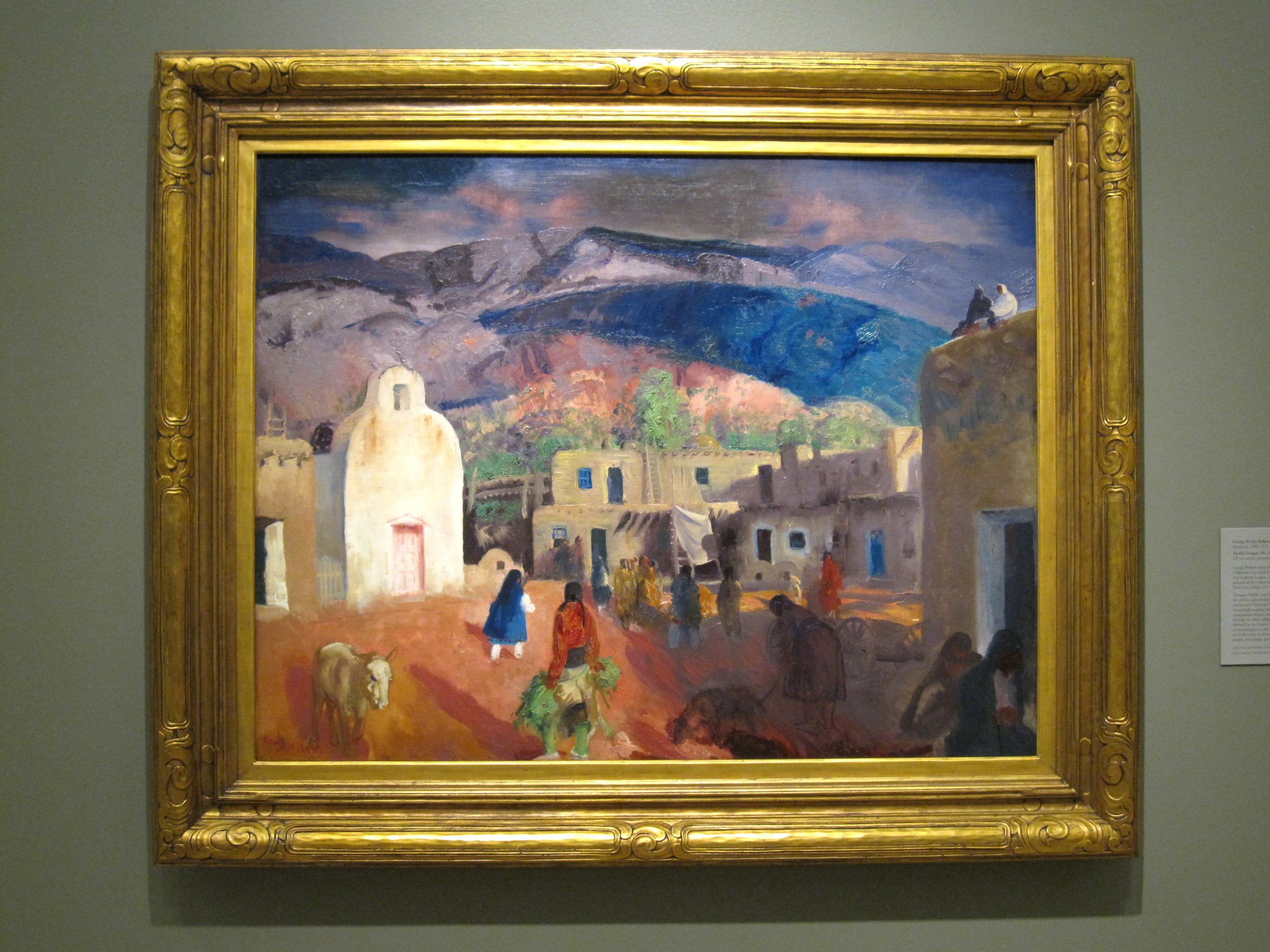
GEORGE WESLEY BELLOWS (1882 – 1925)
Pueblo Tesuque, No. 2, 1917, oil on canvas mounted on plywood, 34-5/8" x 44-5/8", c. 1915-20 American Arts and Crafts frame, metal-gilded hand-carved wood. Painting, Gift of Julia and Humbert Tinsman.
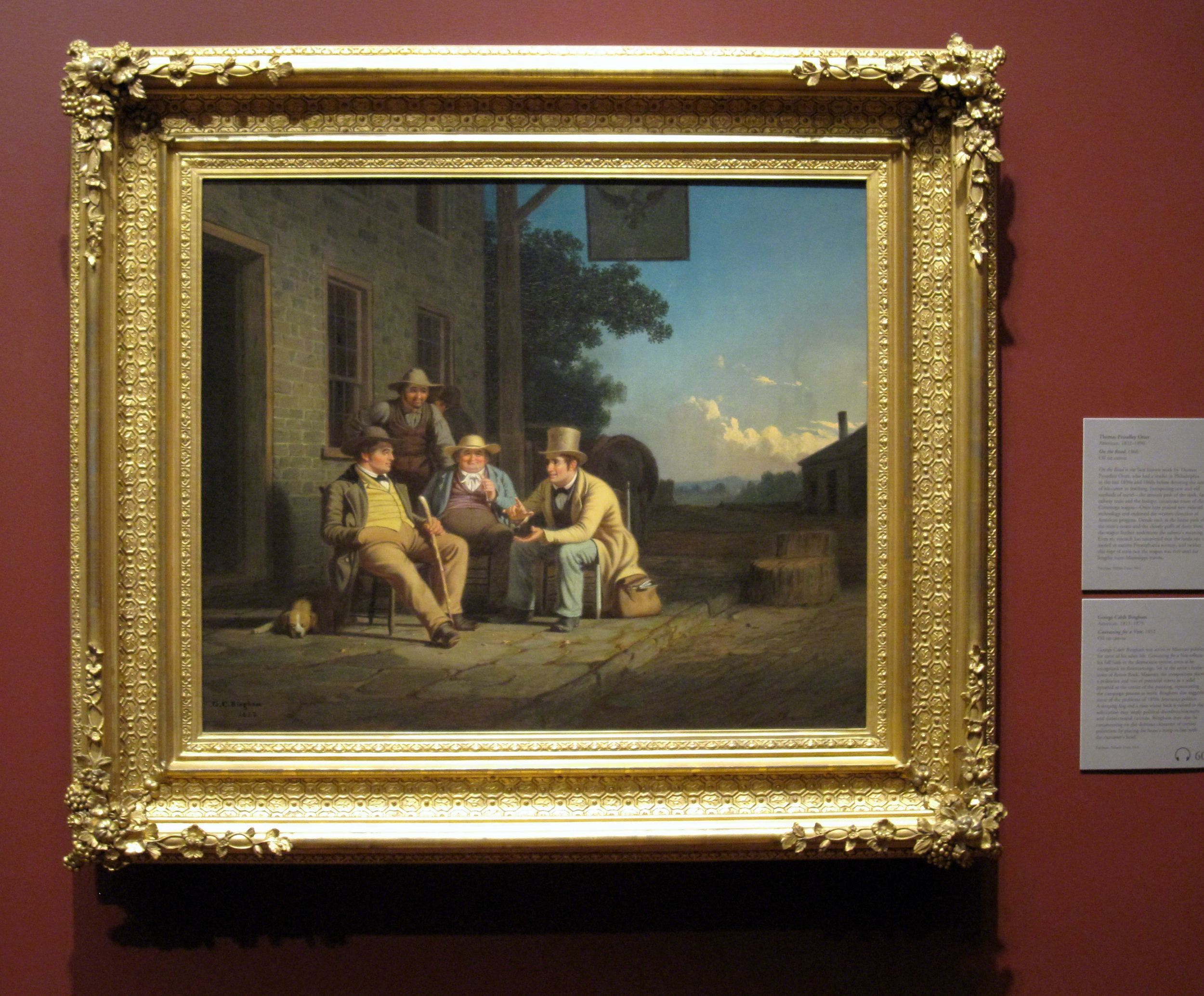
GEORGE CALEB BINGHAM (1811 – 1879)
Canvassing For A Vote, 1852, oil on canvas, 25-1/4" x 30-1/2", museum period frame cleaned and restored by Gill & Lagodich. "In late March 1851, just as the American Art-Union was purchasing Fishing on the Mississippi, the Missouri artist George Caleb Bingham wrote one of his frequent letters to his closest friend and patron James Rollins. From New York, where he had been in residence for the past five months, Bingham described at length his reaction to recent political developments in Missouri. More than half of the letter detailed Bingham's disgust with some of their friends' behavior, especially that of Senator Henry Geyer, which he considered dishonest and driven by self-interest. Indeed, Bingham, even when living at a distance from his home state, remained deeply invested in its politics. An ardent Whig until the party's demise in 1856 and his coincident departure for Europe, he was very active in politics, including serving a term as a state legislator and a presidential electoral delegate and testing the waters for the governorship." —museum catalog essay. Painting purchase: William Rockhill Nelson Trust.

ALFRED THOMPSON BRICHER (1837– 1908)
Schooner, Close-Hauled, 1883, oil on canvas, 24-3/8" x 4-1/2", period 1880s American Barbizon frame. Painting gift of the Enid and Crosby Kemper Foundation.
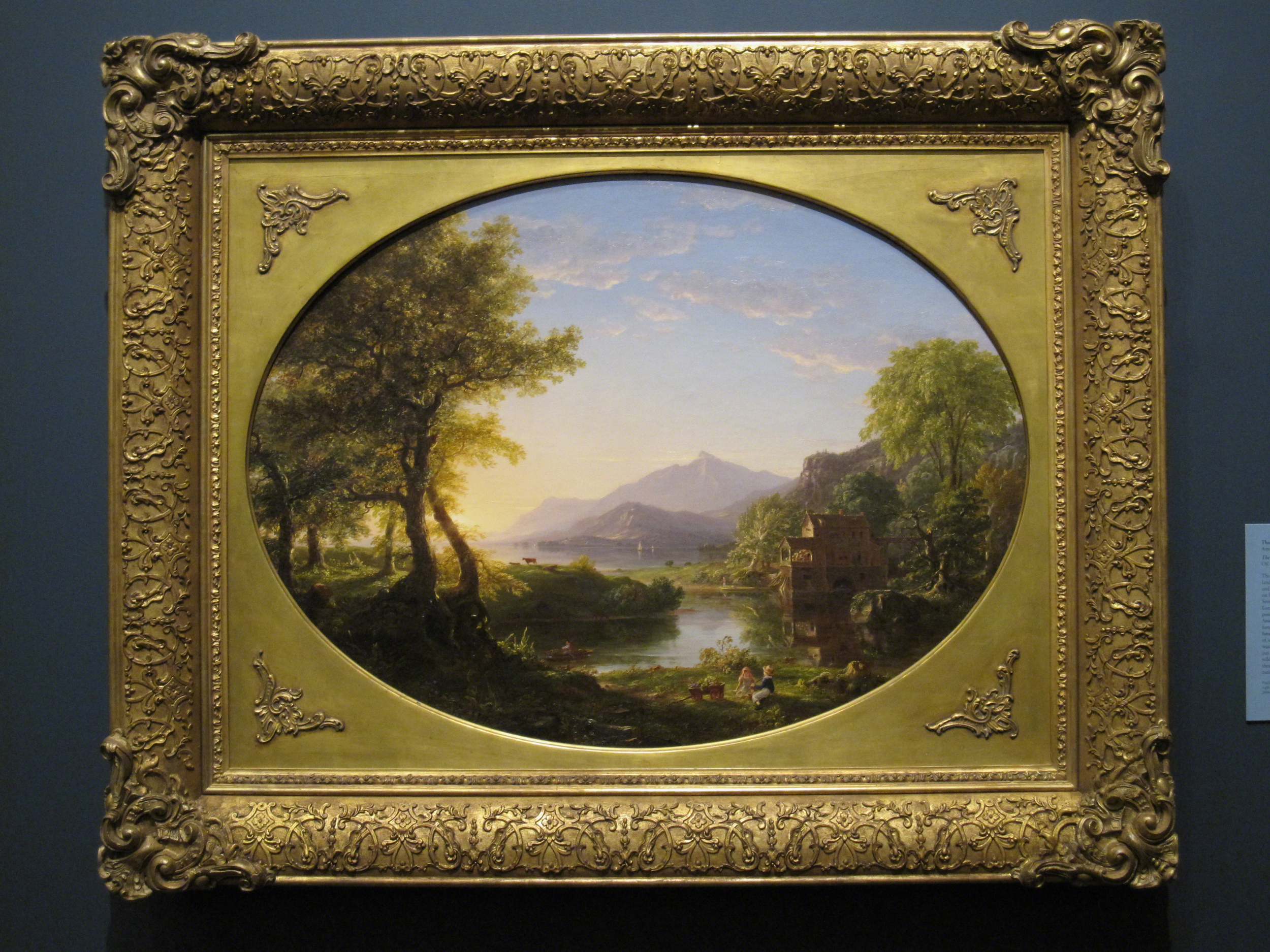
THOMAS COLE (1801 – 1848)
The Old Mill At Sunset, 1844, oil on canvas, 26-1/8" x 36-1/16", original period frame, gilded applied composition and metal ornament on wood, cleaned and extensively restored by Gill & Lagodich. Painting, Purchase: William Rockhill Nelson Trust through The Ever Glades Fund and exchange of a gift from the Howard P. Treadway and Tertia F. Treadway Collection.

JASPER FRANCIS CROPSEY (1823 – 1900)
Stonehenge, 1876, oil on canvas, 24-1/4" x 54-1/8", period English Watts frame. Painting, Gift of Mrs. Thomas King Baker and Mrs. George H. Bunting Jr.
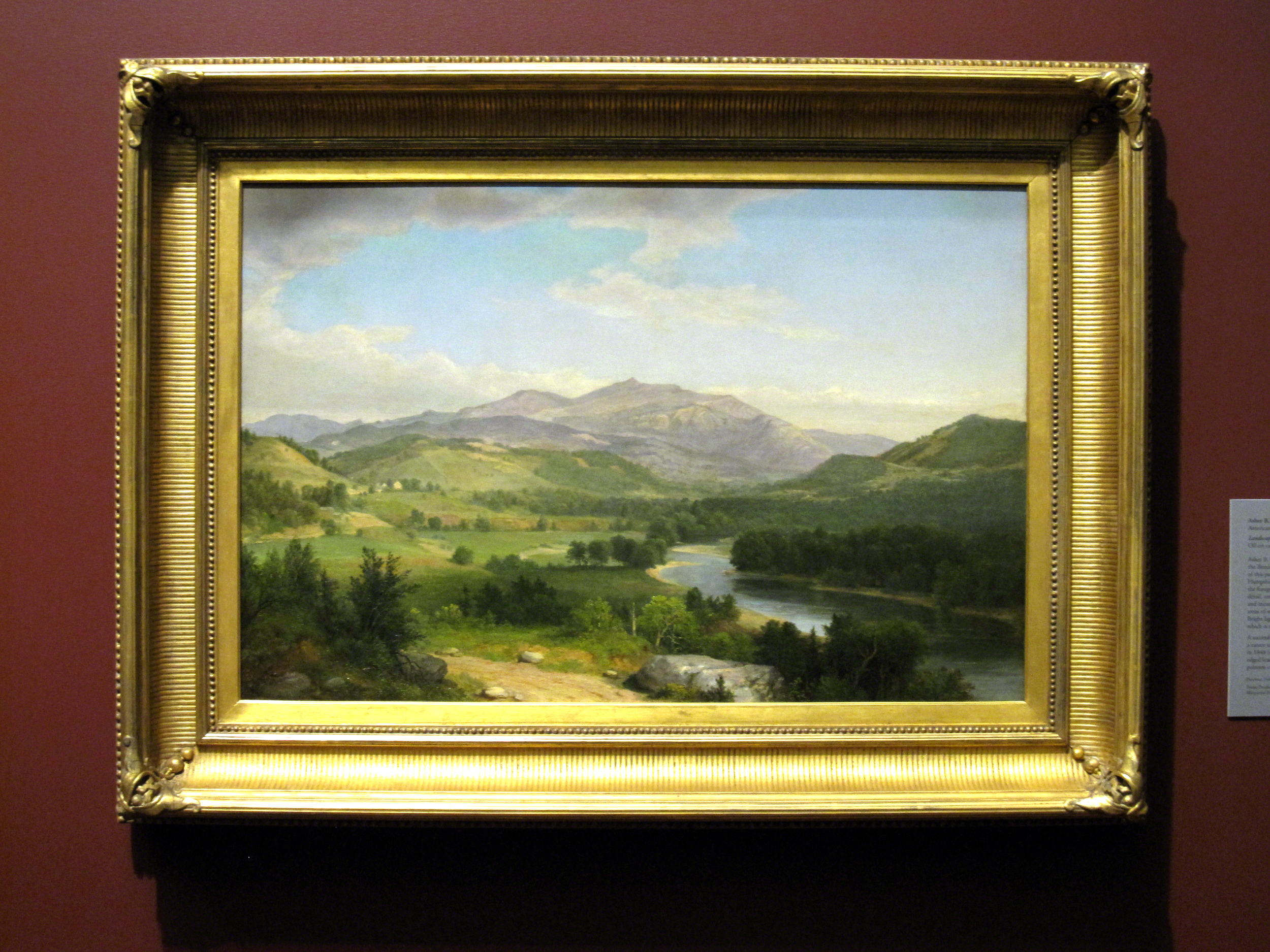
ASHER BROWN DURAND (1796 – 1886)
Welch Mountain, 1863, oil on canvas, 20-3/4" x 30-1/4", period American frame, gilded applied composition ornament on wood. “Asher B. Durand evoked the philosophical idea of the Beautiful in the harmony, serenity and loveliness of this pastoral landscape of Welch Mountain, New Hampshire. He achieved these qualities by depicting the foreground with a fine brush to give remarkable detail, rendering the middle ground more sketchily and incorporating a number of flat, broadly painted areas of soft lavenders and blues in the background. Bright light and shadow play across the entire view, which is enveloped in a hazy atmosphere. A successful engraver, Durand did not turn to painting as a career until he was 40. After Thomas Cole's death in 1848, he became the acknowledged leader of the group of American landscape painters commonly called the Hudson River School.” —museum label. Painting Purchase: William Rockhill Nelson Trust.
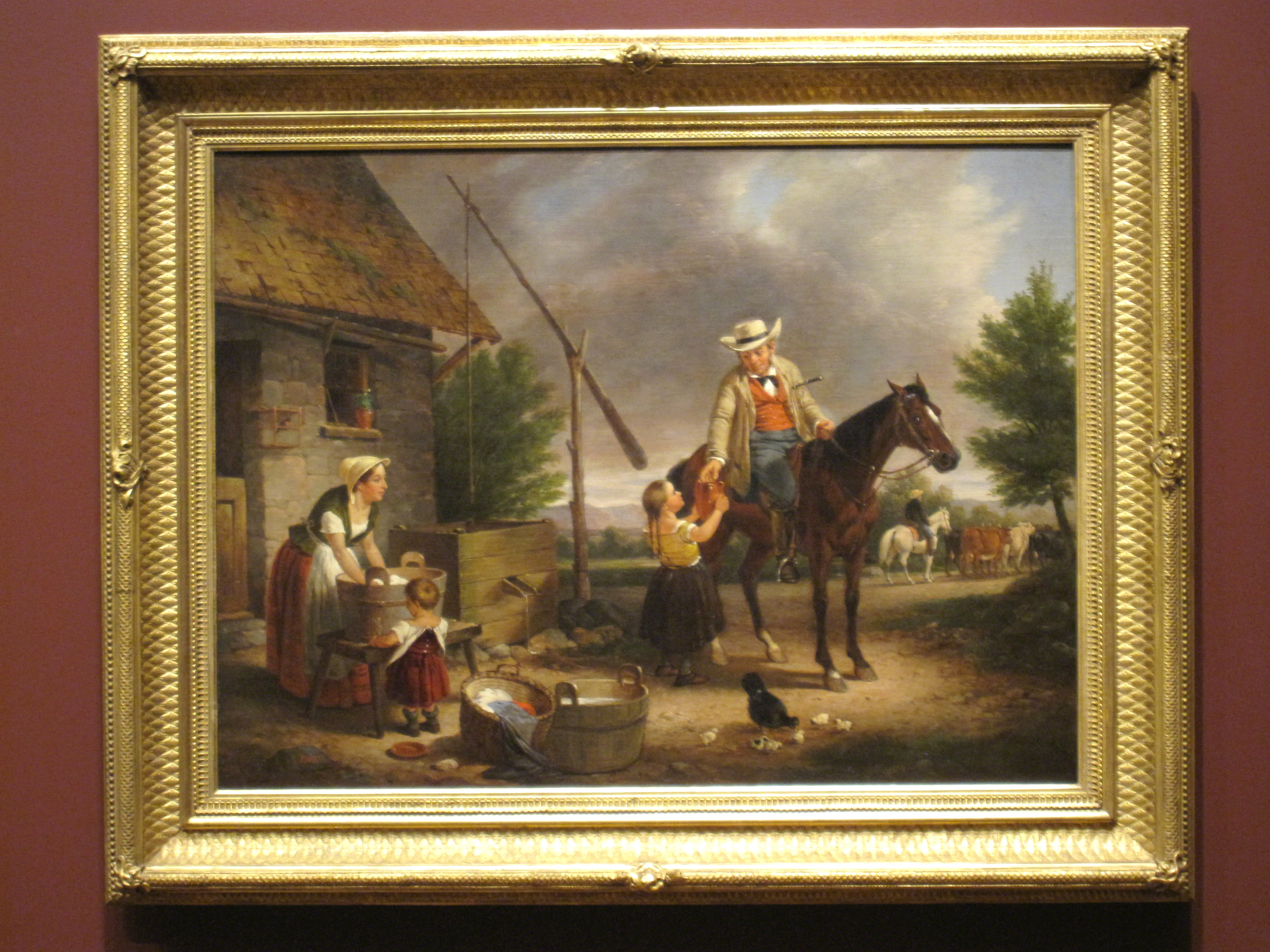
FRANCIS WILLIAM EDMONDS (1806 – 1863)
The Thirsty Drover, 1856, oil on canvas, 26-7/8" x 36", period 1850s frame, gilded applied composition ornament on wood. Painting Purchase: William Rockhill Nelson Trust
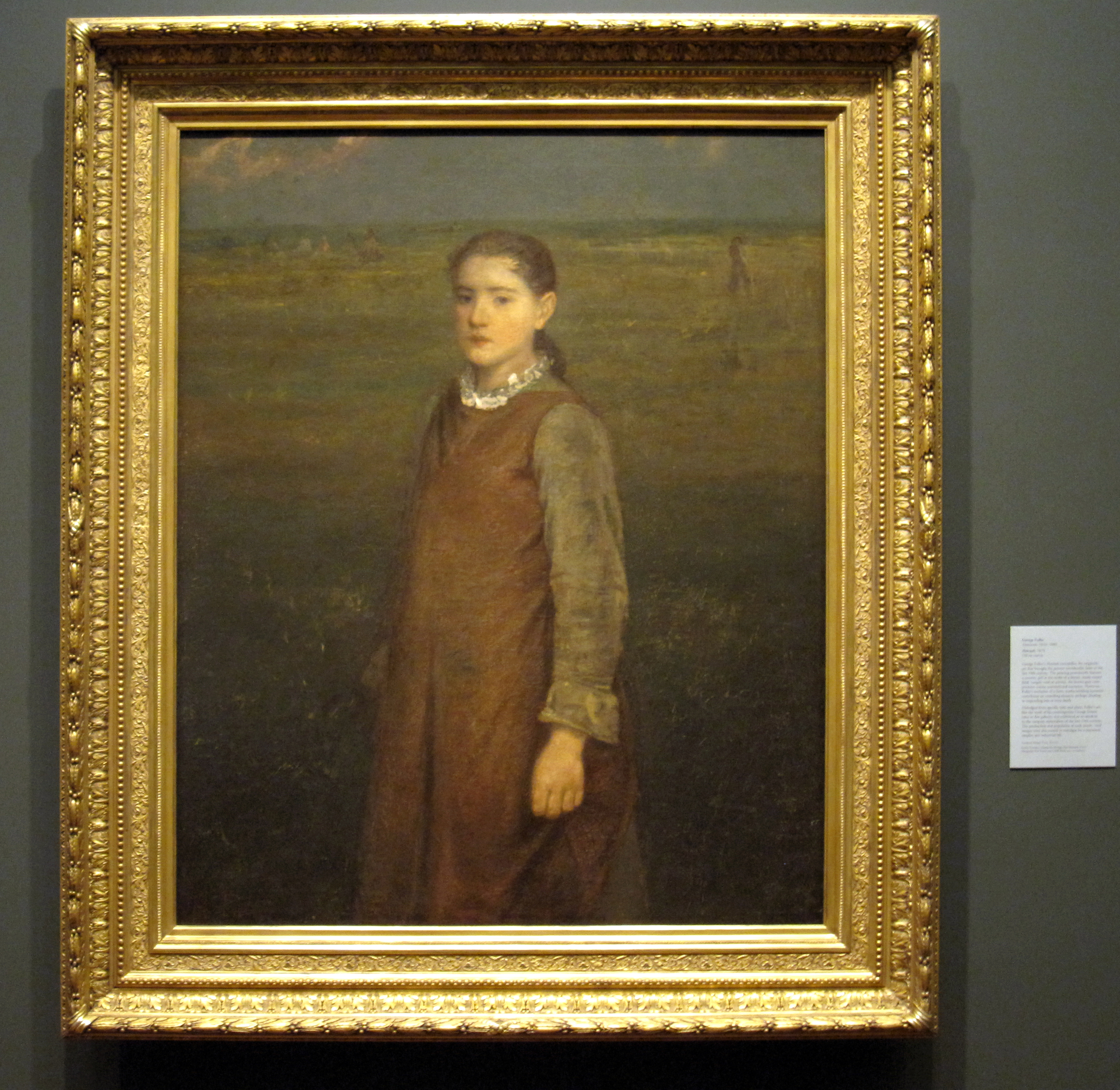
GEORGE FULLER (1822 – 1884)
Hannah, 1879, oil on canvas, 50-1/8" x 40-3/8", custom-made replica 1870s American frame fabricated by Gill & Lagodich. “George Fuller's Hannah exemplifies the enigmatic art that brought the painter considerable fame in the late 19th century. The painting prominently features a country girl in the midst of a dreary, nearly empty field. Largely void of activity, the brown-grey composition resists conventional narrative. However, Fuller's inclusion of a faint, scythe-wielding harvester contributes an unsettling element, perhaps alluding to impending loss or even death. Dislodged from specific time and place, Fuller's art, like the work of his contemporary George Inness (also in this gallery), was embraced as an antidote to the rampant materialism of the late 19th century. The production and popularity of such poetic, rural images were also rooted in nostalgia for a perceived simpler, pre-industrial life.”—Museum gallery label. Purchase: Nelson Trust, 33-15/1Painting Purchase: William Rockhill Nelson Trust
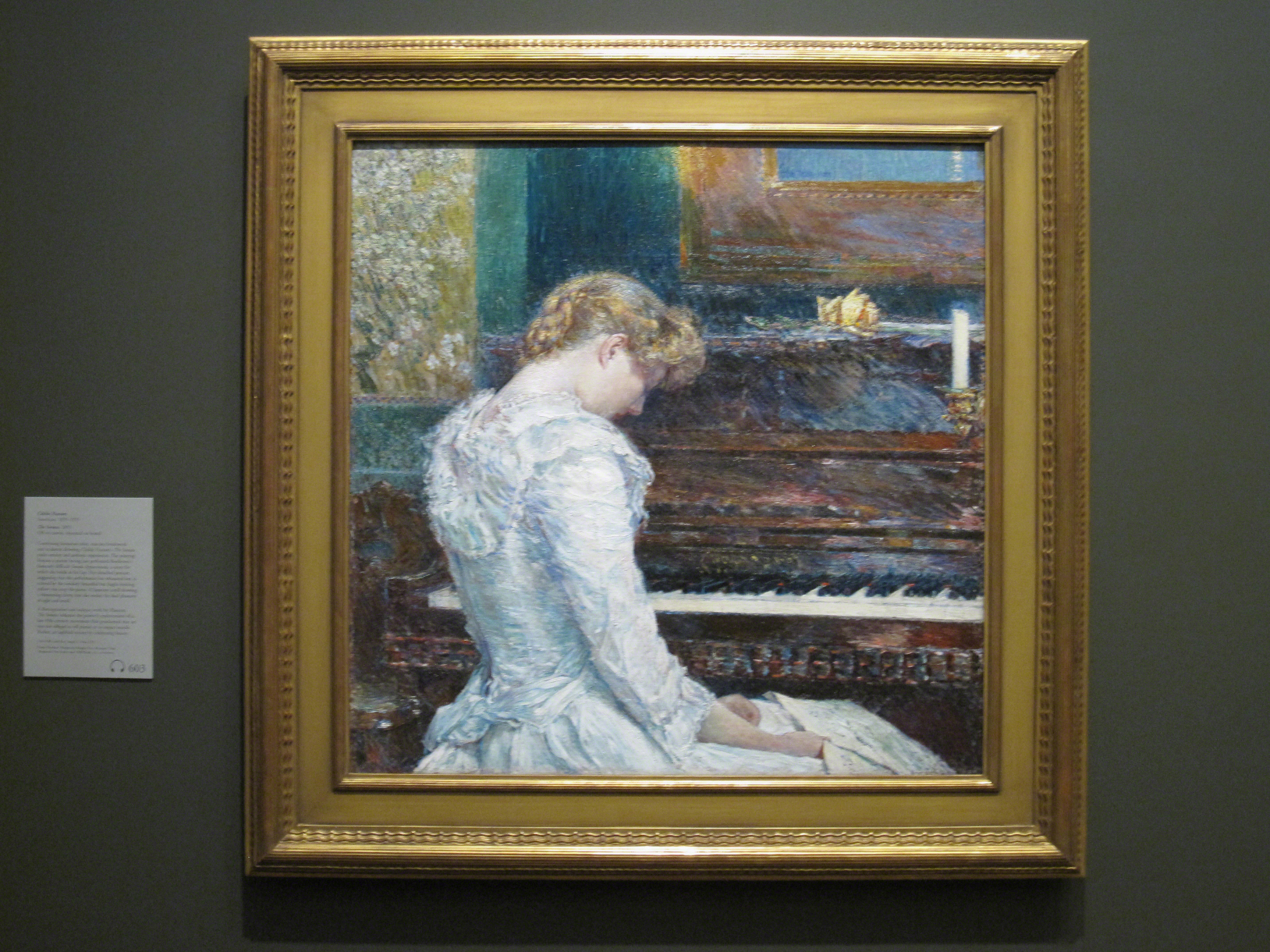
FREDERICK CHILDE HASSAM (1859 – 1935)
The Sonata, 1893, oil on canvas mounted on board, 32-1/16" x 32-1/16", custom-made replica c. 1890s Stanford White/LeBrocq-style frame fabricated by Gill & Lagodich. Painting Gift of Mr. and Mrs. Joseph S. Atha
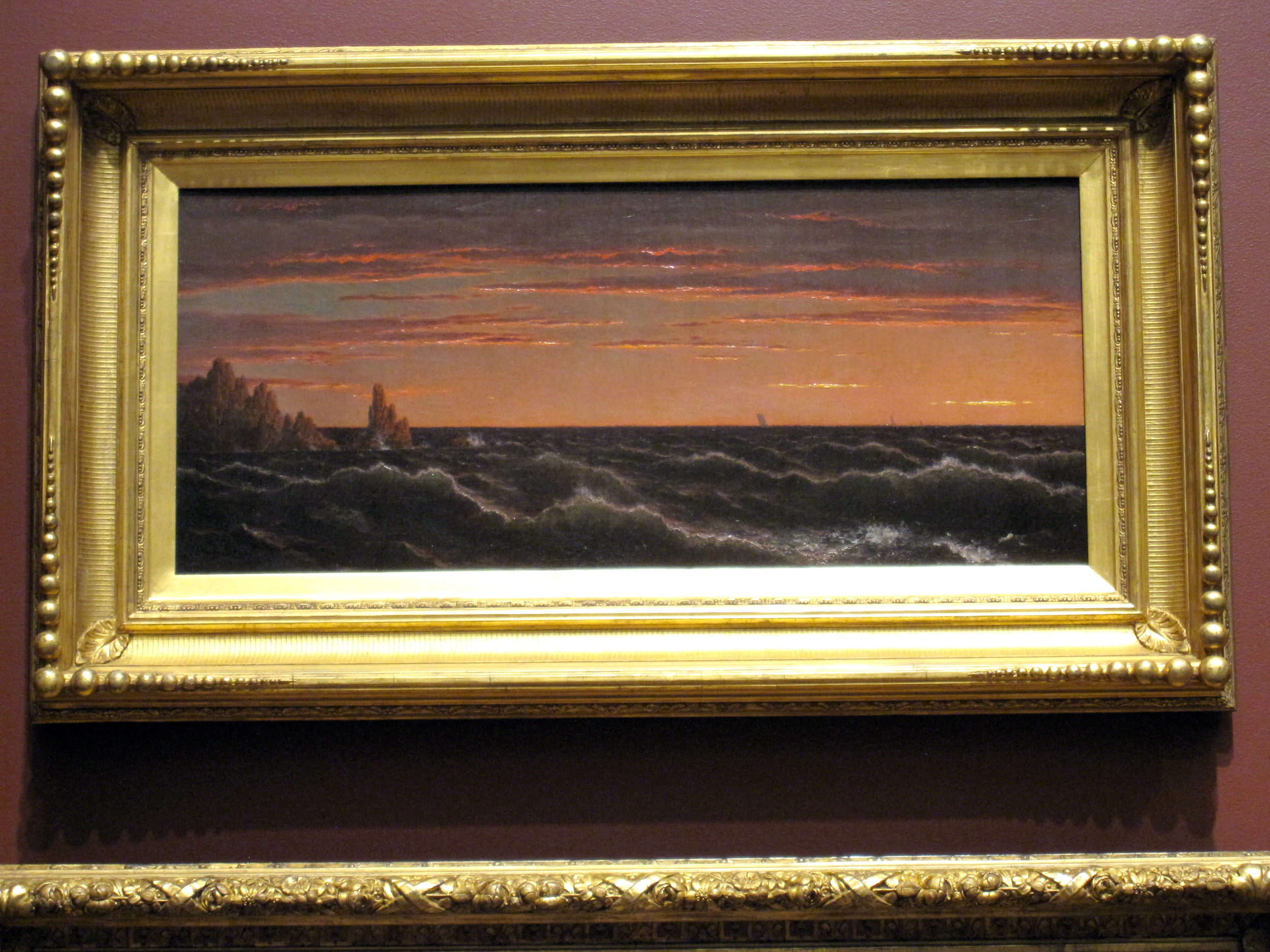
MARTIN JOHNSON HEADE (1819 – 1904)
Sunset On The Rocks — Newport, 1861, oil on canvas, 11-1/8" x 25-1/4", period 1860s American frame, gilded applied composition ornament and embossed paper on wood. Painting Gift from the collection of Julia and Humbert Tinsman
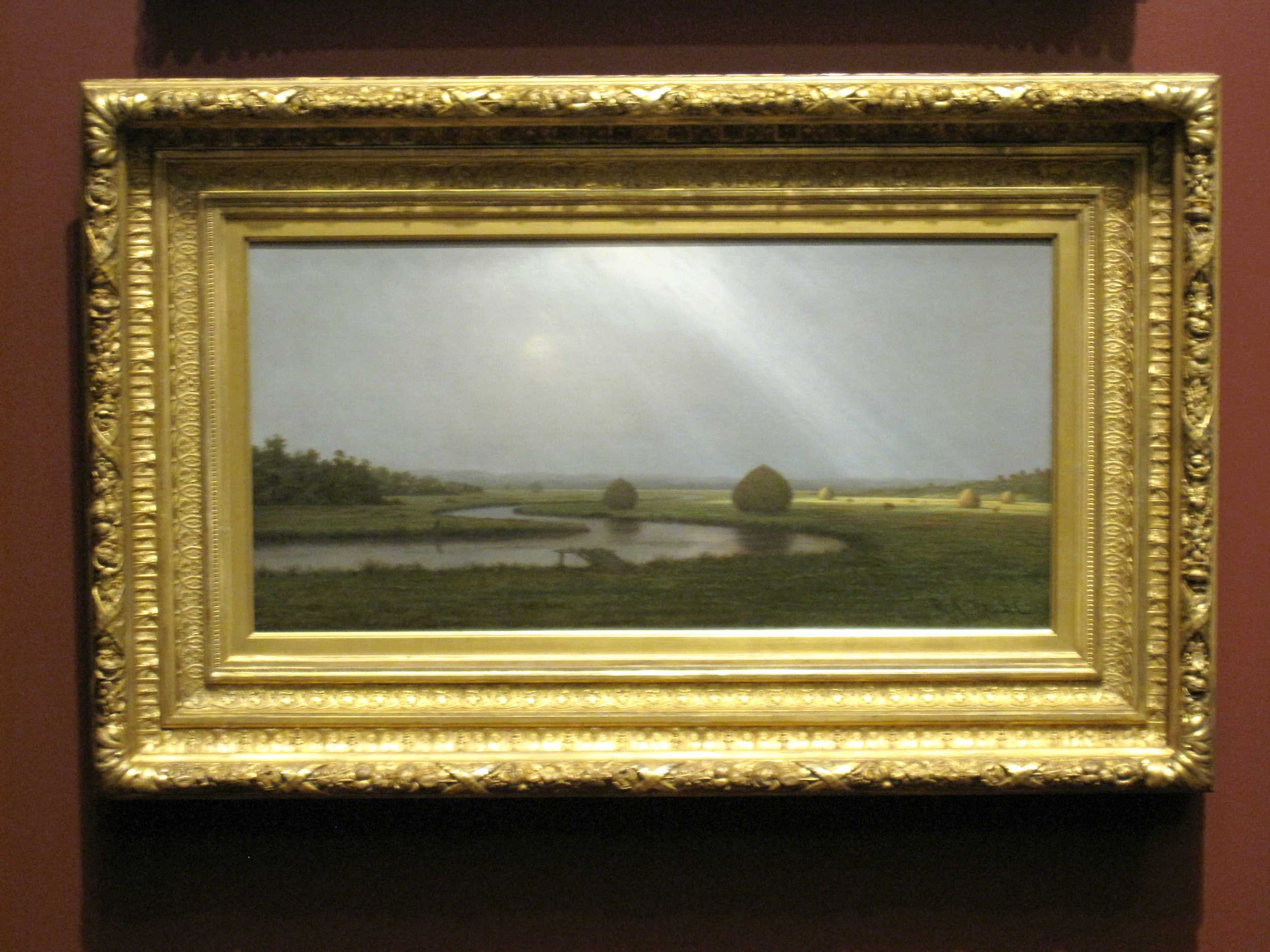
MARTIN JOHNSON HEADE (1819 – 1904)
After The Rain In The Salt Marshes, 1874, oil on canvas, 13-1/8" x 26-7/16", period 1870s frame, gilded applied composition ornament on wood. Painting Gift of the Enid and Crosby Kemper Foundation

ROBERT HENRI (1865–1929)
Mexican Girl with Oriental Scarf, c. 1916-22, oil on canvas, 23-15/16 x 20 in. Period c. 1928 American Arts and Crafts frame; Walfred Thulin, Boston maker; gilded hand-carved wood; hand-carved signature on verso THULIN WT 1928 #1994 #1995; molding width 2-5/8in. “Robert Henri painted sitters from many races, portraying them with his signature keen analysis of character and masterful brushwork. A 1914 trip inaugurated his long-standing fascination with the Southwest and the region’s ethnically diverse people. This interest was further fostered by multiple visits to northern New Mexico where he found subjects who reflected a blend of cultures, notably Mexican and local Native and Hispanic Americans. Henri acknowledged: “I am looking at each individual with the eager hope of finding something of the dignity of life…the humanity…. I do not wish to explain these people…. I only want to find whatever of the great spirit there is in the Southwest. If I can hold it on my canvas, I am satisfied.” —museum label Painting: Gift of Rilye (Toi) and George Ashby, 2010.39

WINSLOW HOMER (1836 – 1910)
Gloucester Harbor, 1873, oil on canvas, 15-9/16" x 22-7/16", period 1870s frame, gilded applied composition ornament on wood. Painting Gift of the Enid and Crosby Kemper Foundation
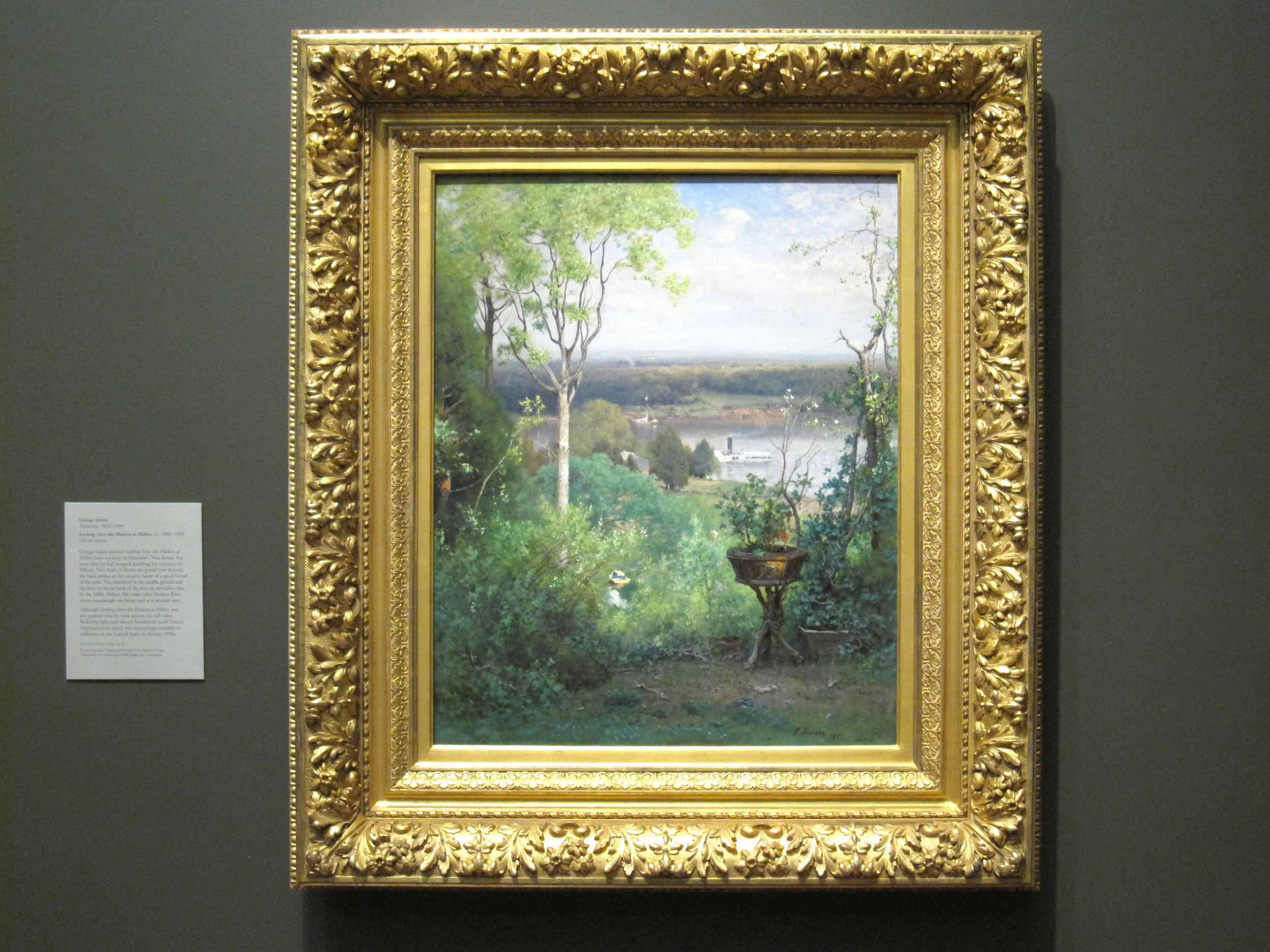
GEORGE INNESS (1825 – 1894)
Looking Over The Hudson At Milton, 1886 – 88, oil on canvas, 27-1/16" x 22", period 1880s American Barbizon frame, gilded applied and cast ornament on wood. “George Inness painted Looking Over the Hudson at Milton from memory in Montclair, New Jersey, five years after he had stopped spending his summers in Milton, New York. It shows the grand view beyond the back garden at the country home of a good friend of the artist. The steamboat in the middle ground and the ferry on the far bank of the river are reminders that, by the 1880s, Milton, like many other Hudson River towns, increasingly was being used as a vacation spot. Although Looking Over the Hudson at Milton was not painted directly from nature, its rich color, flickering light and vibrant brushwork recall French Impressionism, which was increasingly available to audiences in the United States in the late 1880s.” — museum gallery label. Purchase: Nelson Trust, 33-87
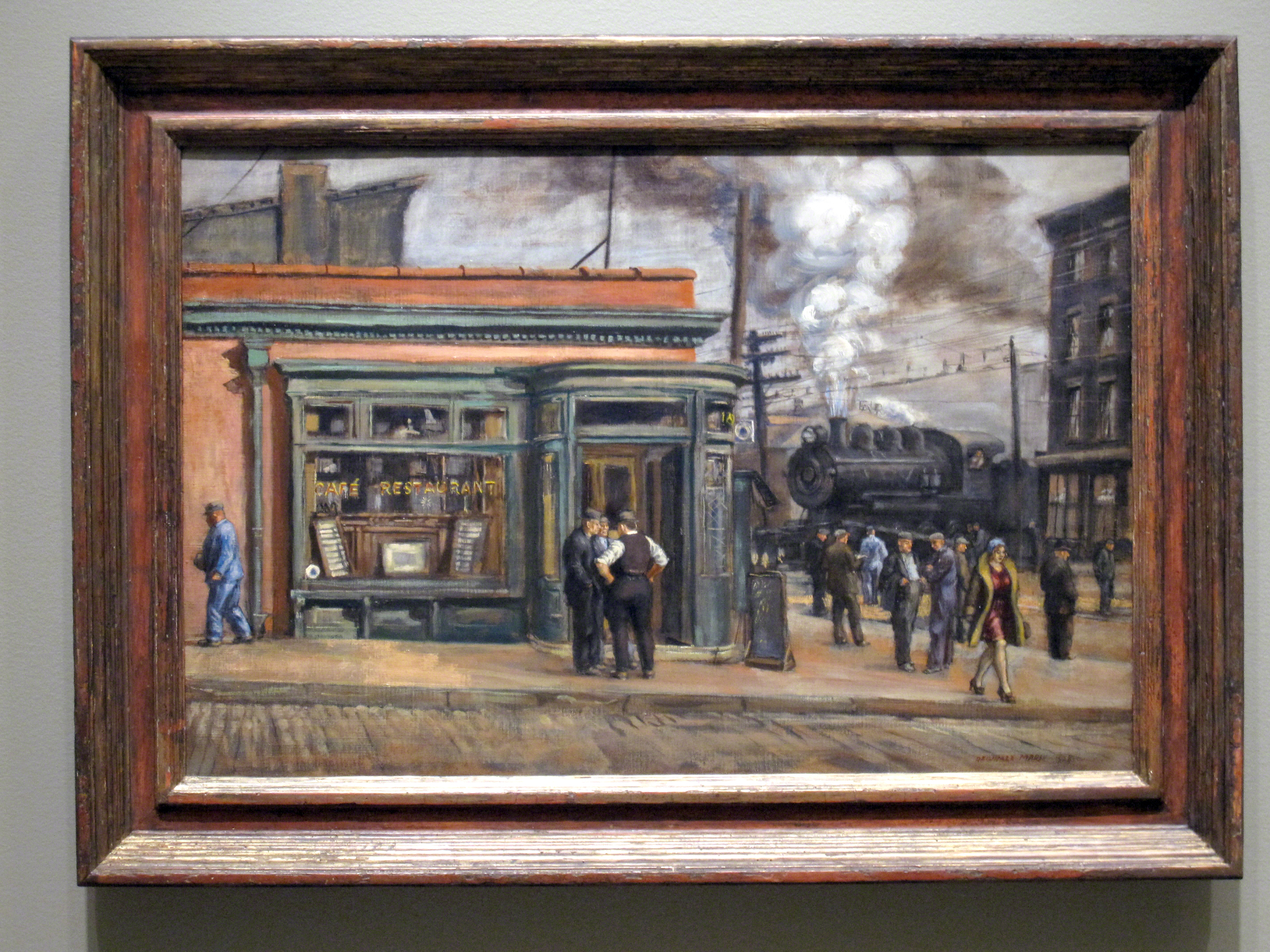
REGINALD MARSH (1898 – 1954)
Pavonia, Jersey City, (Street Scene, Twelfth Avenue), 1928, oil on canvas, 20-1/8 x 30-1/4 in. Period gilded and polychrome oak frame, original distressed finish, cassetta profile; molding width: 3-1/4 in. “Reginald Marsh's Pavonia-Jersey City shows casual activity in an industrial district in New Jersey. An attractive woman strides along the sidewalk of Pavonia Avenue and catches the attention of two men. Her allure is suggested by not only their gawking, but also the locomotive's whistling smokestack. Her rich red dress and position at the corner of the composition, where the entire weight of its design accumulates, ensure that she is the painting's primary focus. Born in Paris, Marsh began his career in magazine illustration and worked among the initial staff of The New Yorker. A train enthusiast, the painter often crossed the Hudson River from his Manhattan studio to Jersey City, which had served as a transportation hub since the 19th century.” —NAMA gallery label. Painting Purchase: acquired through the generosity of the Union Pacific Foundation, Mrs. Herbert O. Peet, and the Nelson Gallery Foundation.
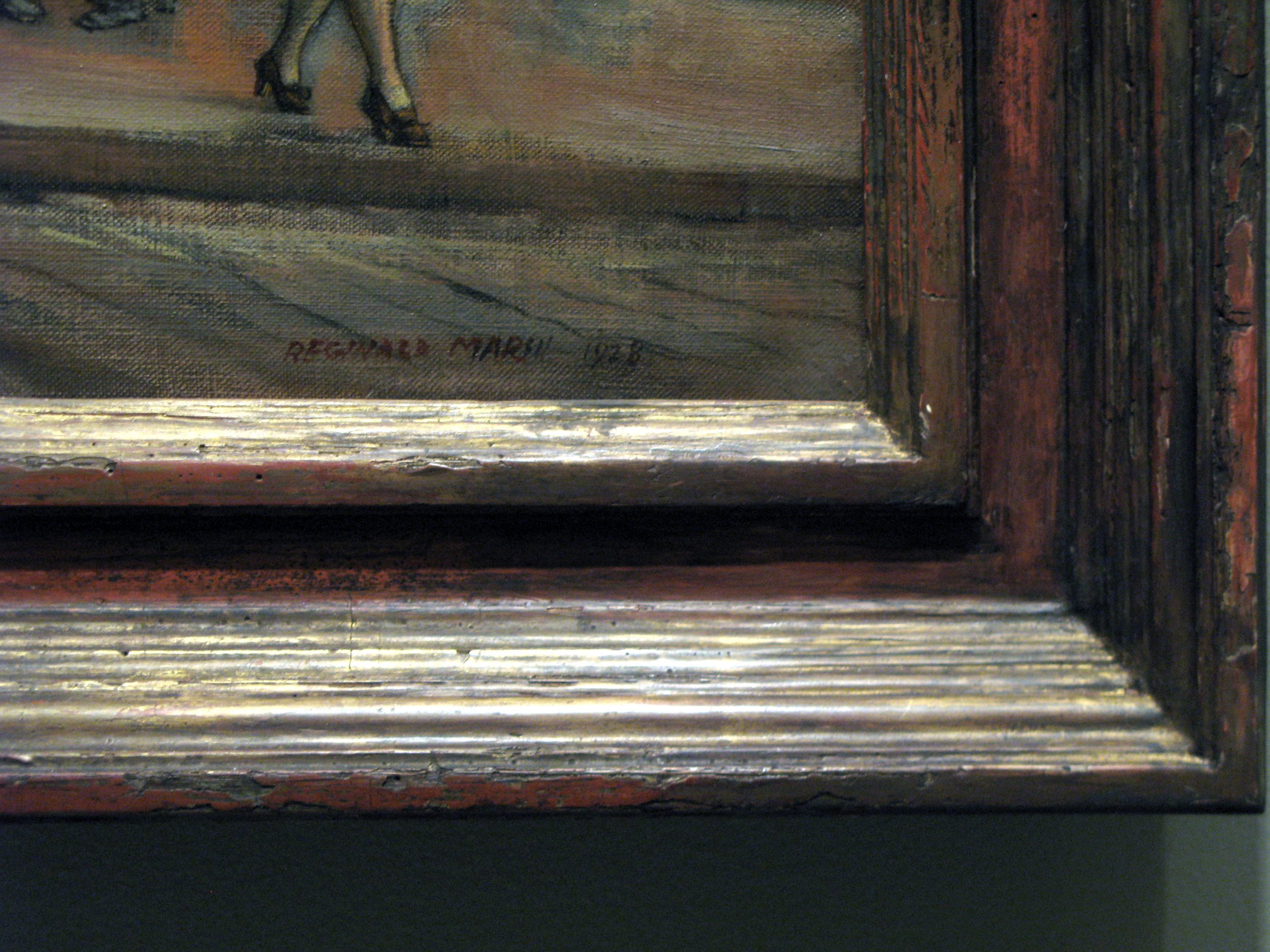
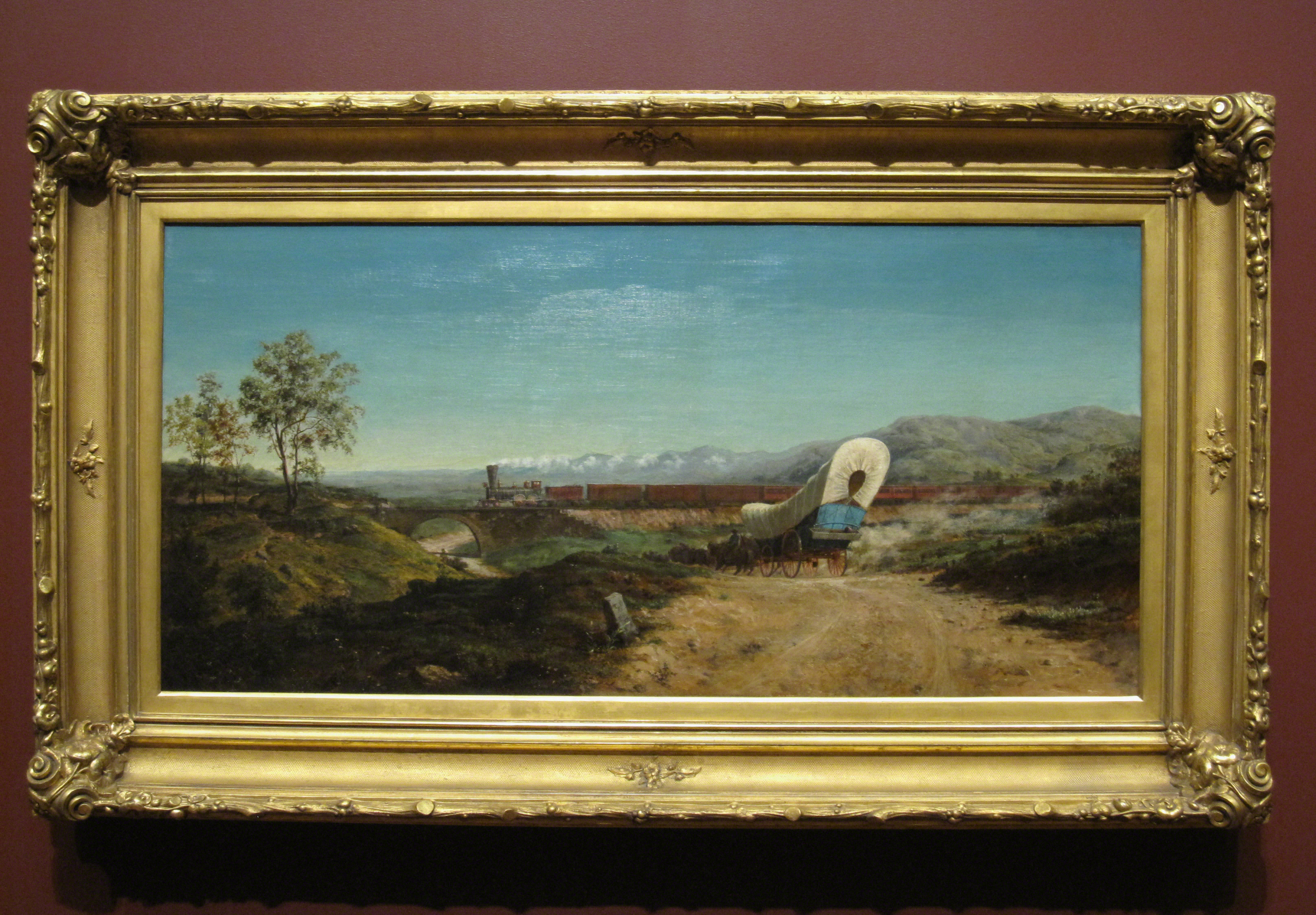
THOMAS PROUDLEY OTTER (1832 – 1890)
On The Road, 1860, oil on canvas, 22-1/8" x 45-3/8", original Earle Galleries frame, gilded applied composition ornament and embossed paper on wood, cleaned and restored by Gill & Lagodich.
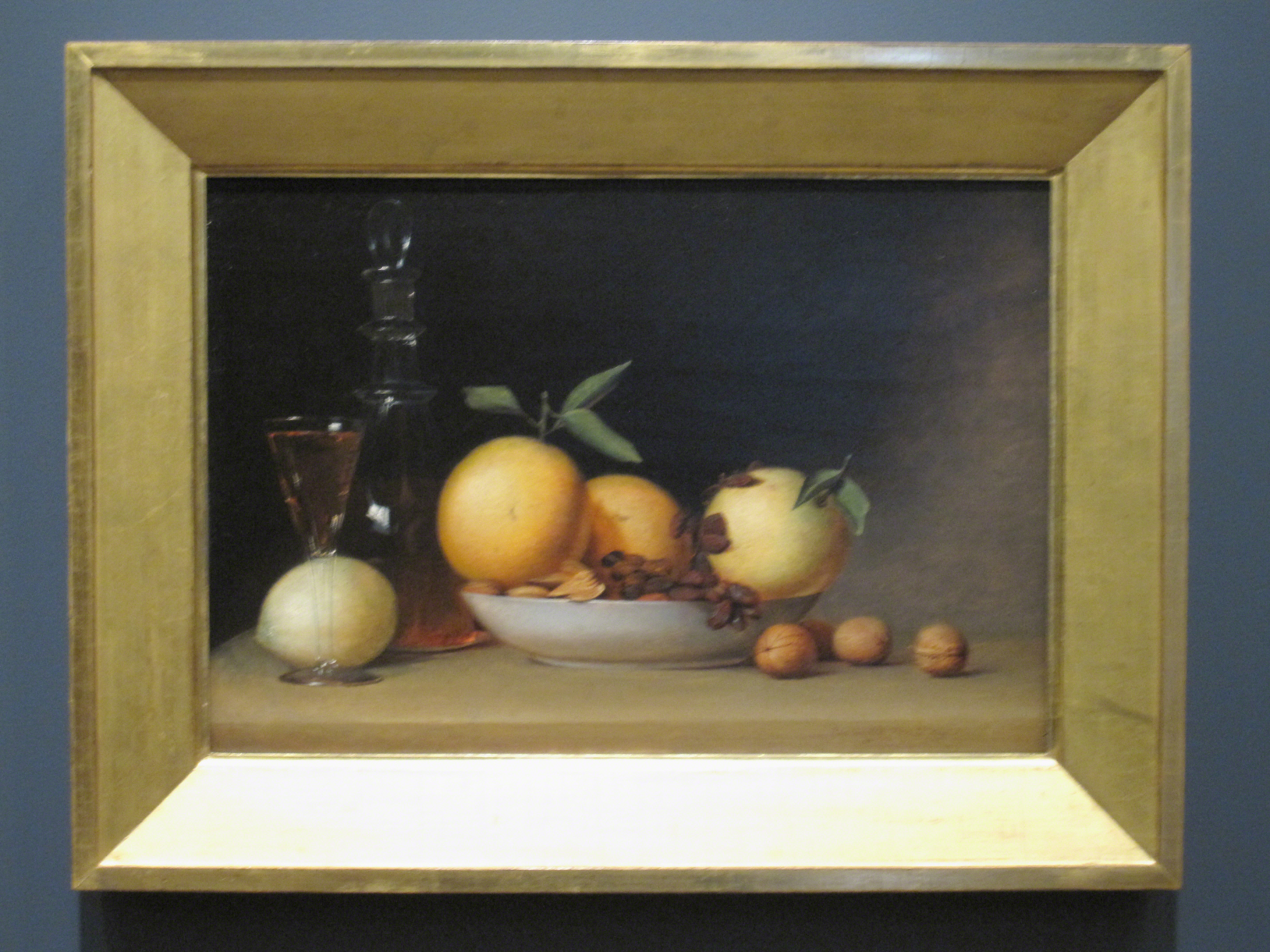
RAPHAELLE PEALE (1774 – 1825)
Still Life With Liquor And Fruit, 1814, oil on wood and panel, 13-7/8" x 19-1/2", period frame. Painting Purchase: The Ever Glades Fund in honor of the 75th anniversary of The Nelson-Atkins Museum of Art
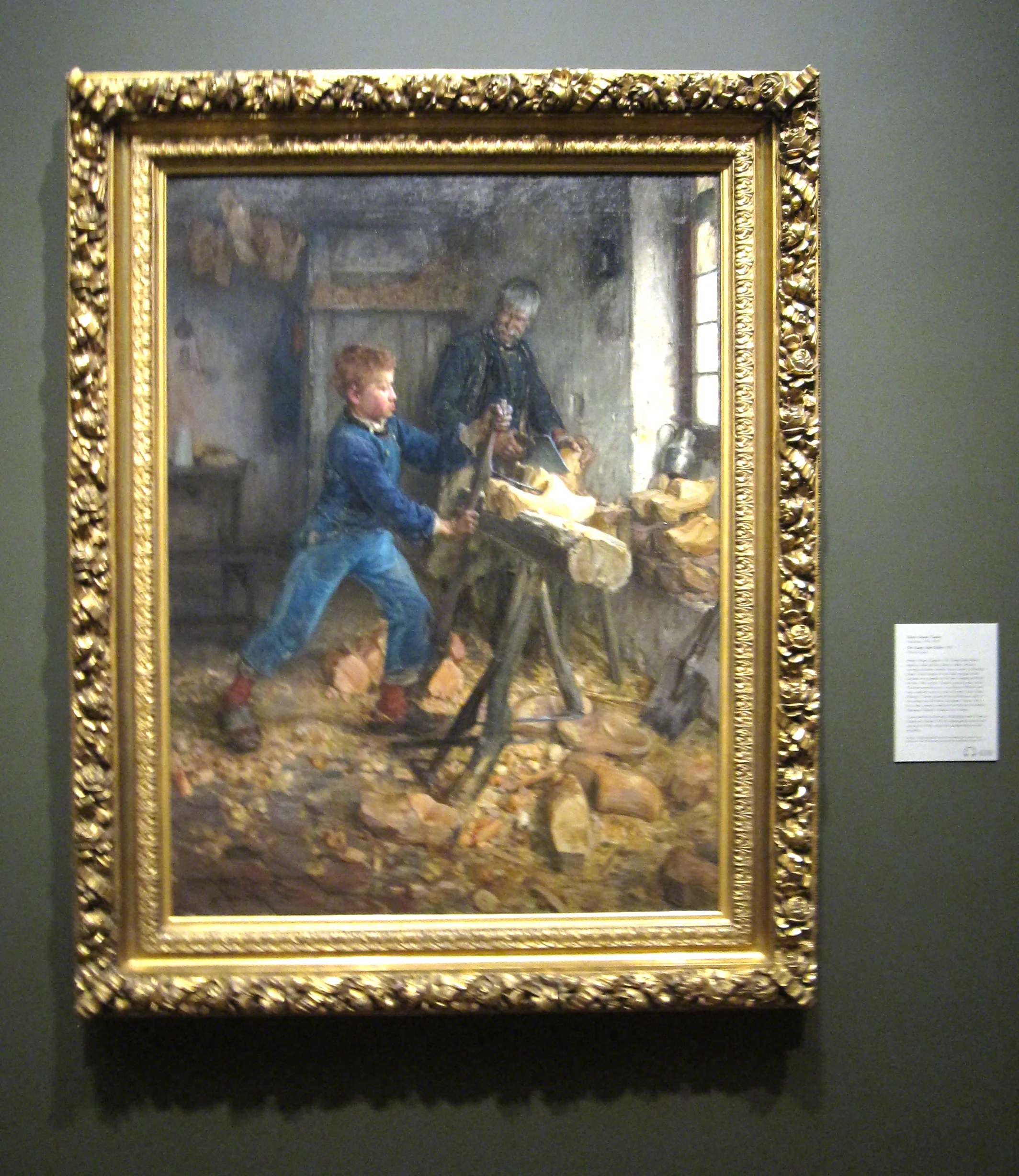
HENRY OSSAWA TANNER (1859 – 1937)
The Young Sabot Maker, 1895, oil on canvas, 47-3/8" x 35-3/8", period American Barbizon frame, gilded applied and cast ornament on wood. “Henry Ossawa Tanner's The Young Sabot Maker depicts a man and boy, likely a father and son, carving traditional (sabots) wooden shoes in Brittany, France. Such images of rural folk engaged in old customs were popular in the fast-changing world of the late 19th century. Tanner's painting also evokes Christian associations as, according to biblical tradition, carpentry was the trade of Joseph, Jesus' father. Fittingly, Tanner presented the painting as a gift to his mother and his father, Benjamin Tanner, who, for a time, served as bishop of the African Methodist Episcopal Church in Kansas City, Kansas.” —museum didactic label. Painting Purchase: William Rockhill Nelson Trust through the George H. and Elizabeth O. Davis Fund and partial gift of an anonymous donor
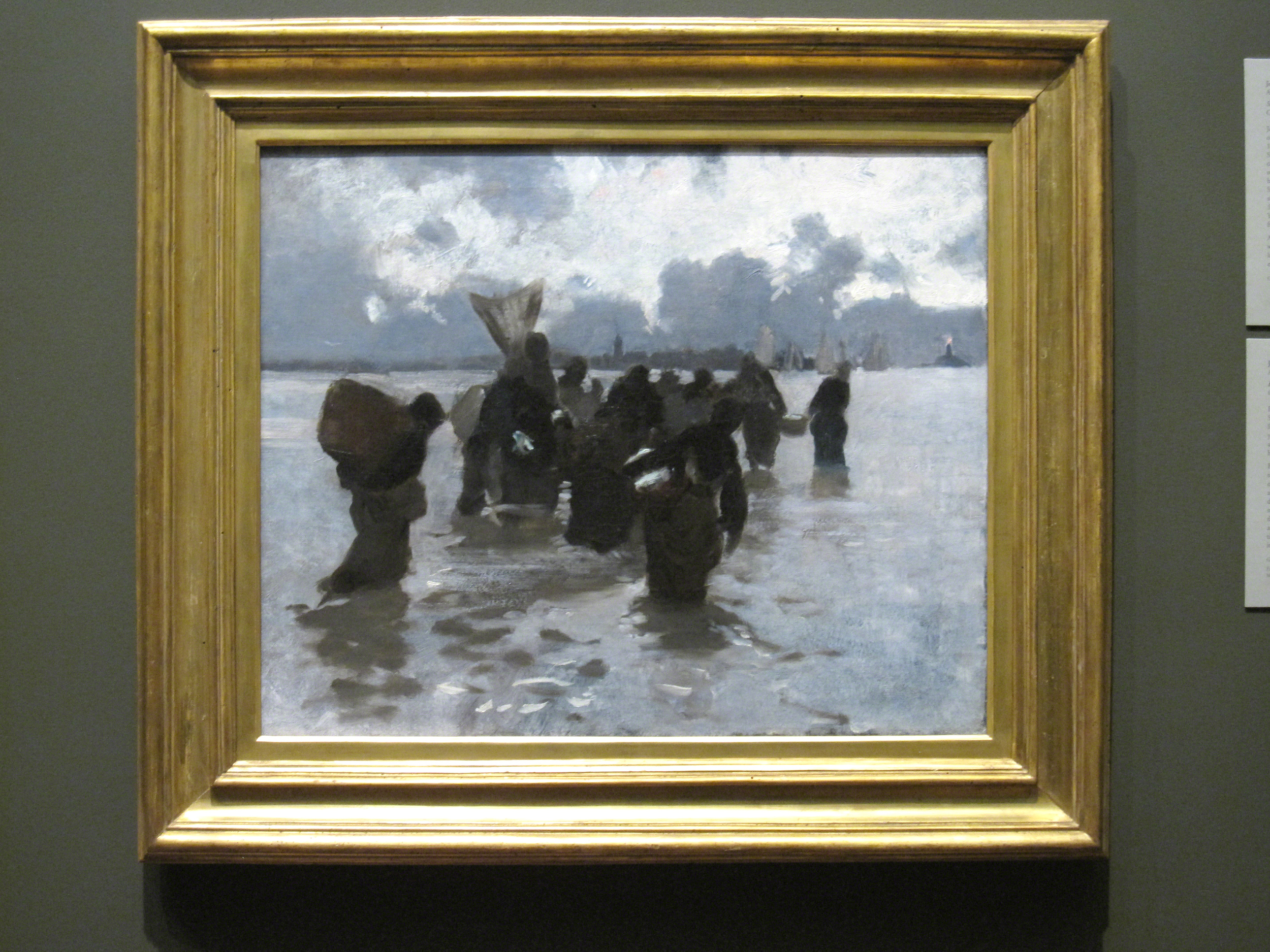
JOHN SINGER SARGENT (1856 – 1925)
The Oyster Gatherers Returning, (Fisherwomen Returning), 1877, oil on canvas, 19-5/8" x 24-1/4", period frame. Painting Gift of Mrs. Louis Sosland.
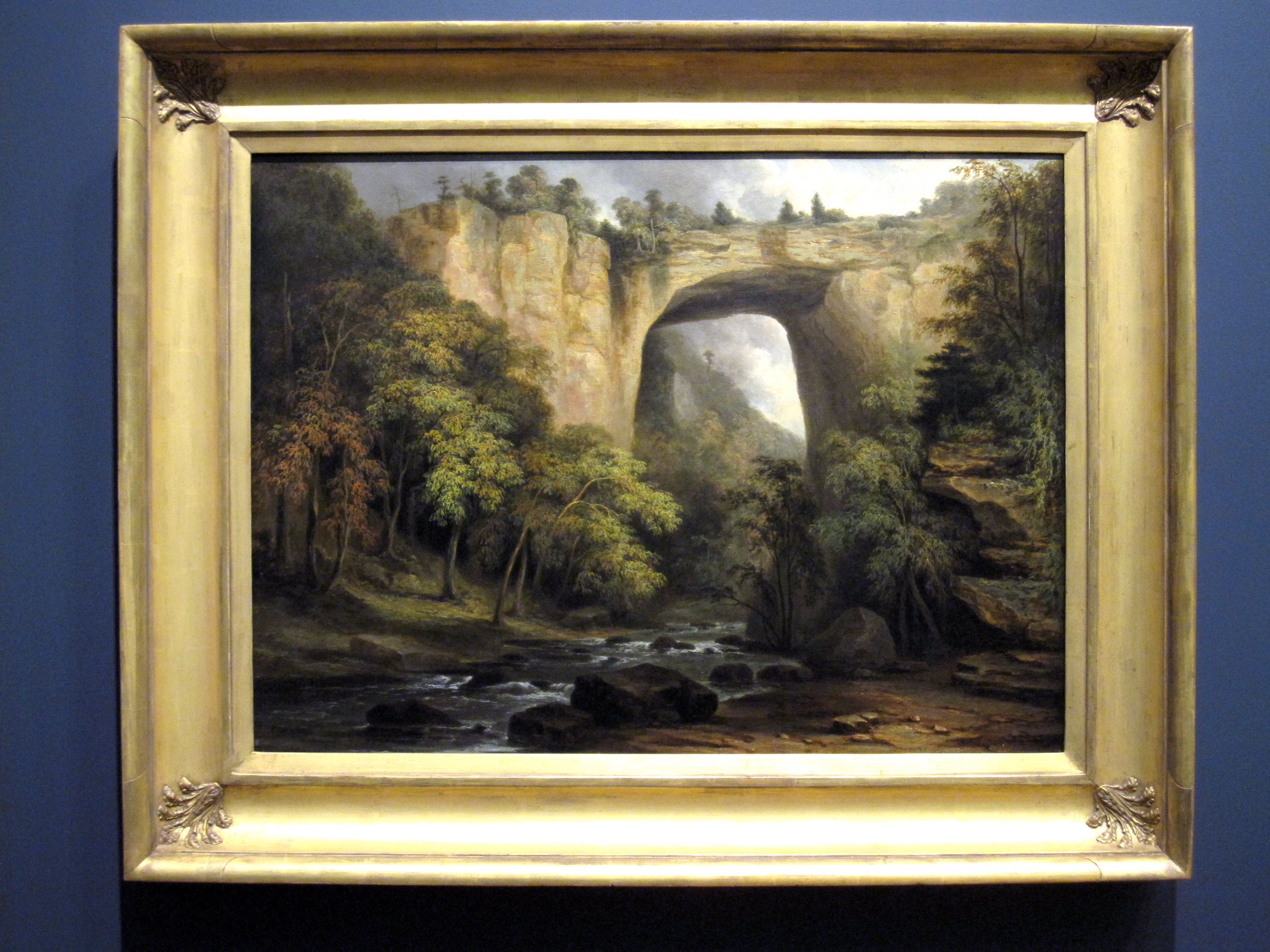
JACOB CALEB WARD (1809 – 1891)
Natural Bridge, Virginia, c. 1835, oil on panel, 23-11/16" x 32-1/16", period American frame, gilded applied composition ornament on wood. Painting Purchase: William Rockhill Nelson Trust.
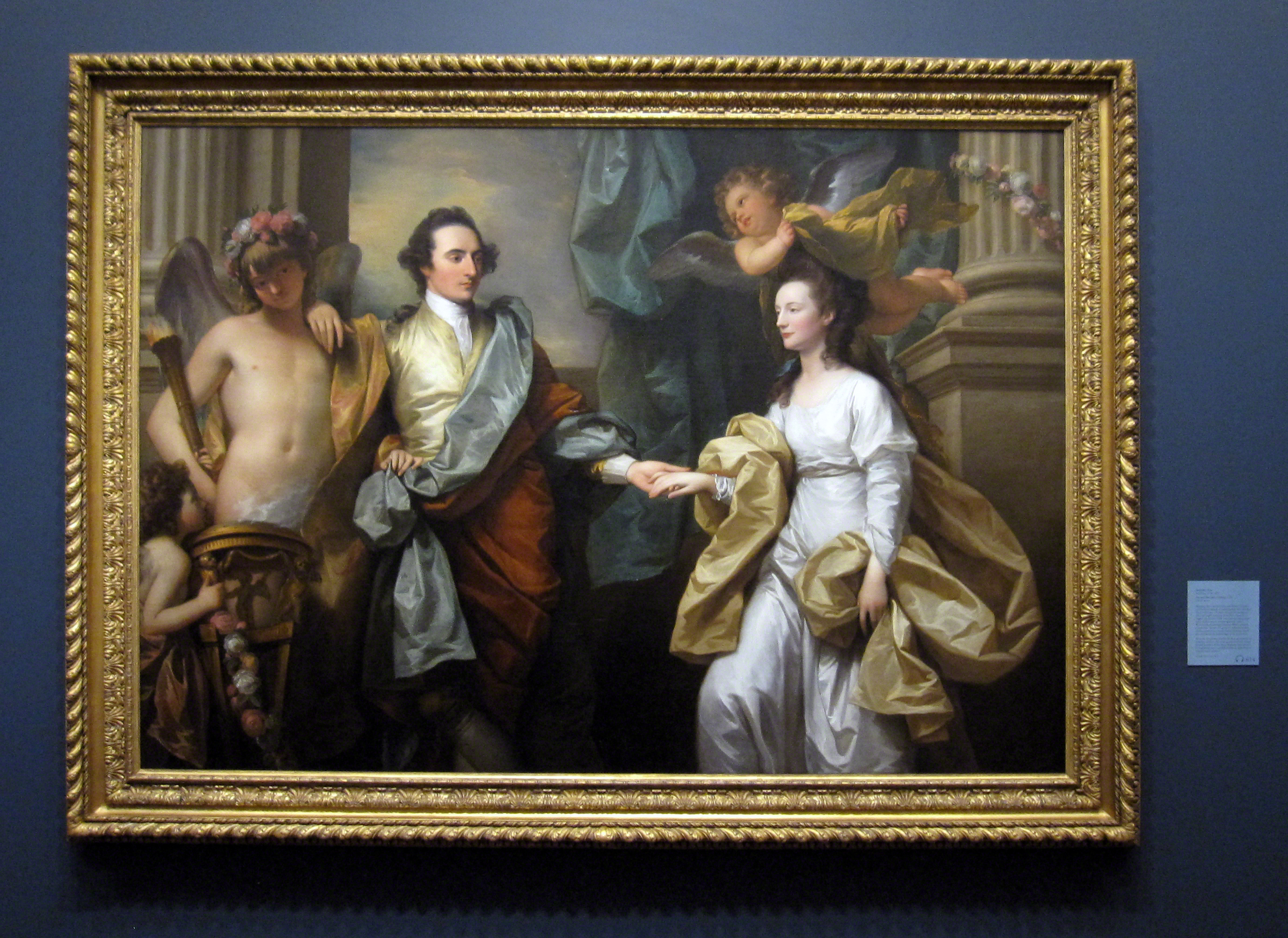
BENJAMIN WEST (1738 – 1820)
Mr. and Mrs. John Custance, 1778, oil on canvas, 60-1/4" x 84-5/8", original frame cleaned and extensively restored by Gill & Lagodich. Painting purchase: William Rockhill Nelson Trust, 34-77
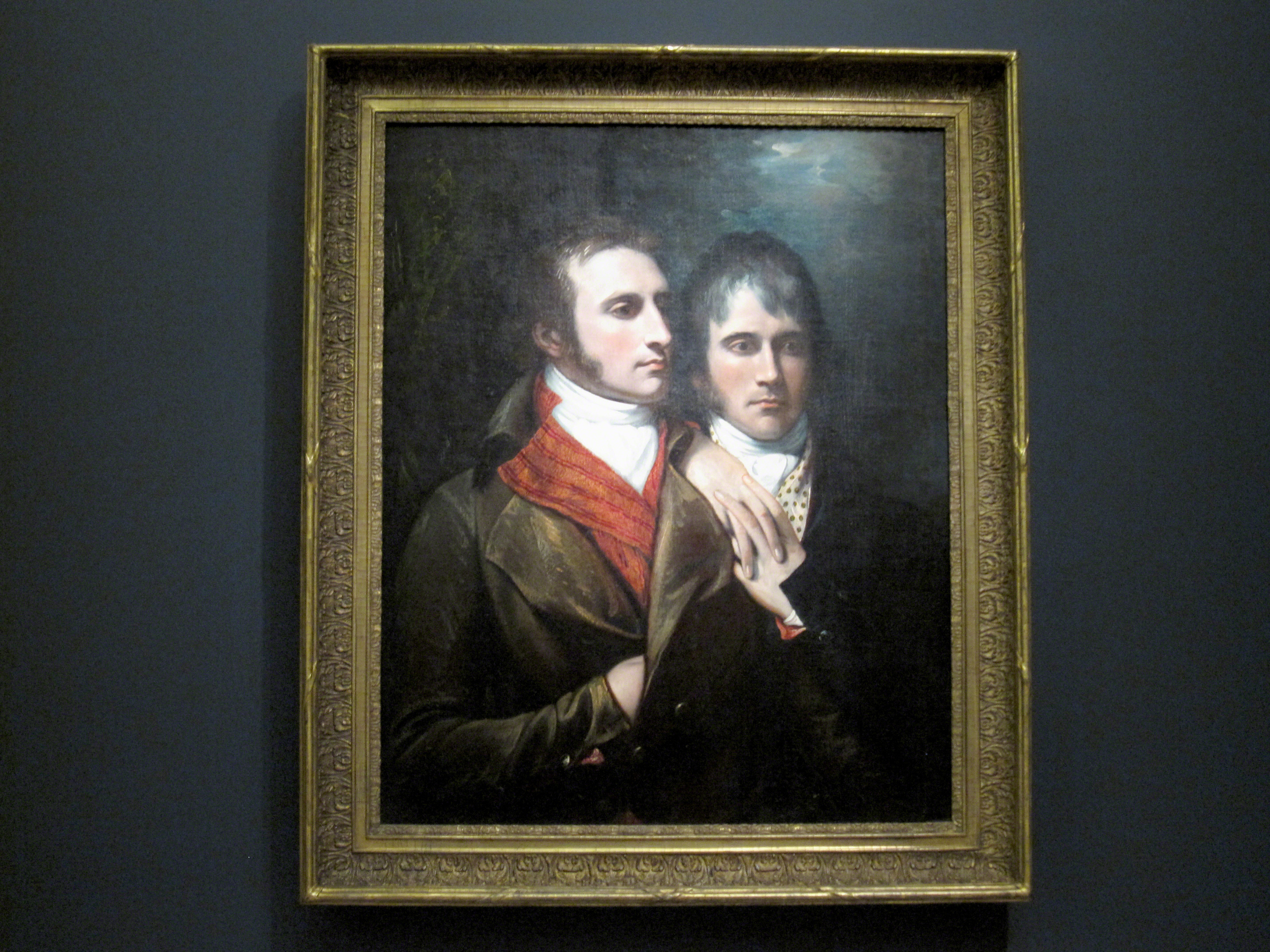
BENJAMIN WEST (1738 – 1820)
Raphael West and Benjamin West Jr. — Sons Of The Artist, 1796, oil on canvas, 36-1/4" x 29-5/16", period American frame, gilded applied composition ornament on wood. Painting Gift of the Laura Nelson Kirkwood Residuary Trust
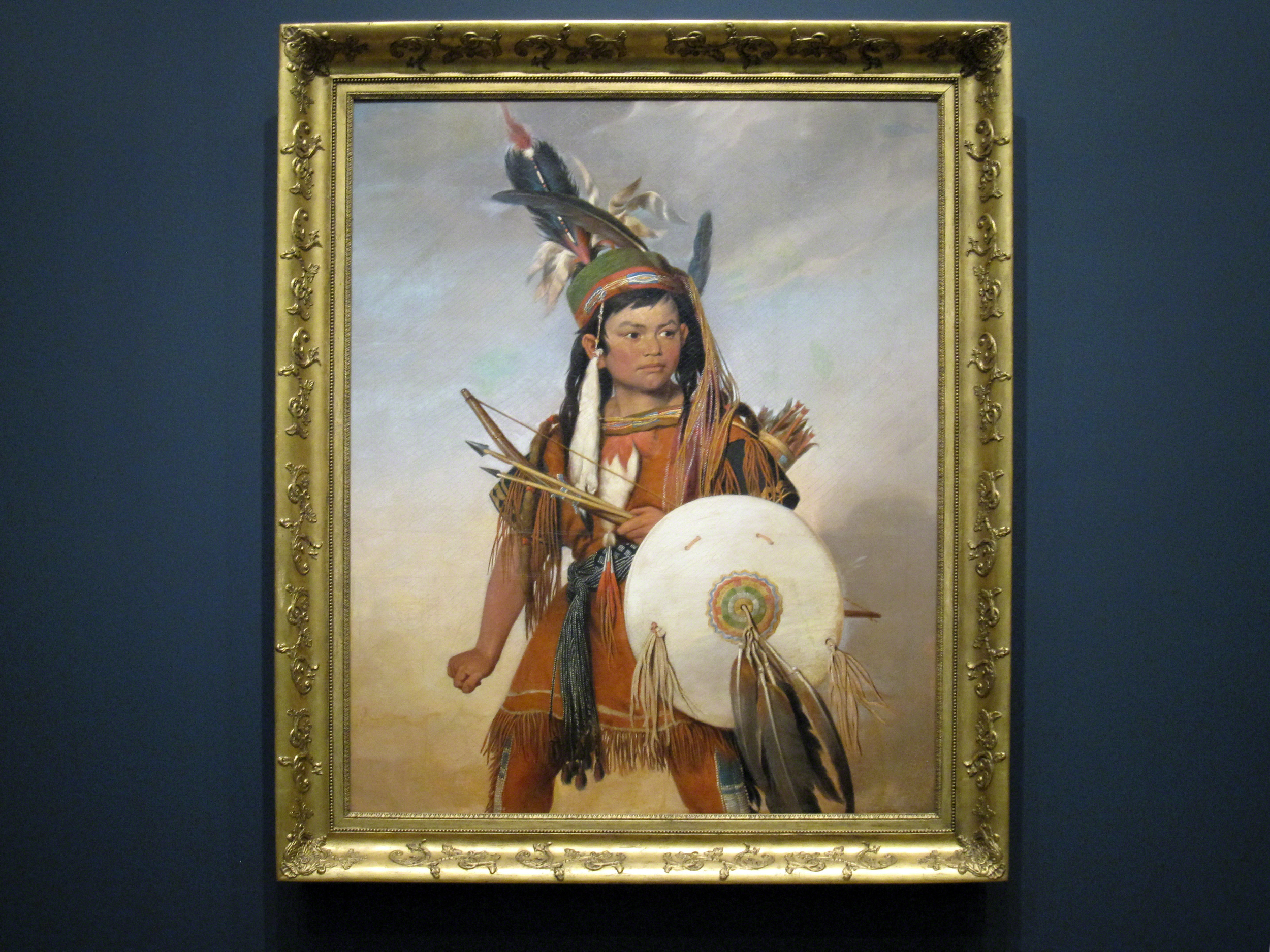
FRANCIS WILLIAM WILKIN (1791 – 1842)
Nikkanochee, Prince Of Econchati, A Young Seminole Indian, Son of Red Hills, 1841, oil on canvas, 50-1/2" x 40-1/4", period American frame, gilded applied composition ornament on wood. Painting Purchase: William Rockhill Nelson Trust
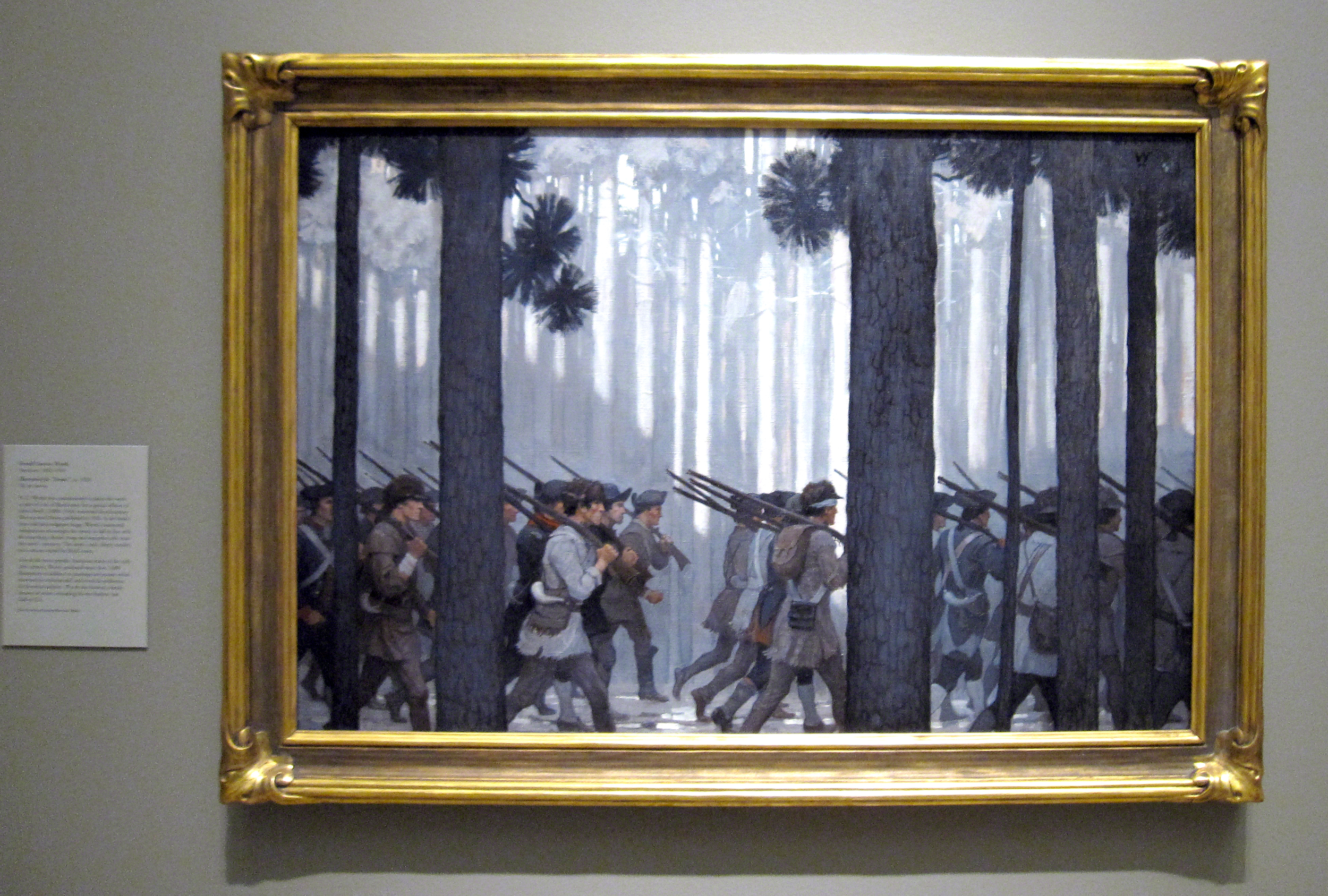
NEWELL CONVERS WYETH (1882 – 1945)
Illustration for Drums, ca. 1928, oil on canvas, 26-1/2" x 40-1/8", original period frame, restored by Gill & Lagodich. Painting Gift of Sarah and Landon Rowland
